Reviews
The Mischief Makers
François Truffaut
France, 1957
Credits
Review by Ben Ewing
Posted on 30 March 2010
Source Criterion Collection DVD
For auteurists seeking a rich text to represent the truest kernel of his oeuvre, Les mistons should be their starting point, not simply because it’s the first extant short film by the young Truffaut but also because it contains so many of the story and style points one will come to expect of his very best films.1
— Richard Neupert
I think Les Mistons has a lot in common with [Truffaut’s] later work, more than The 400 Blows does.2
—Wes Anderson
Shot in the south of France on 35 mm, without live sound (in typical Neo-Realist and New Wave fashion), Les mistons (The Mischief Makers) was initially planned as one part of a larger project to adapt a handful of short stories from Maurice Pons’s recently published collection Virginales. The short stars Gérard Blain and his young wife and first-time actress Bernadette Lafont, who play young lovers spied upon and teased by a pack of early adolescent boys. The story is narrated, in seasoned but dispassionate style, by an older incarnation of one of the young ruffians, looking back and remembering the incidents depicted. The scenes are simple: the boys play voyeurs while the couple plays tennis, or battle each other with finger-guns in an empty old stadium, at the top of which the lovers kiss. Eventually Gérard leaves for a mountain climbing trip and the boys attempt to taunt Bernadette with a lovey-dovey postcard only to learn that Gérard has died in an accident. Bernadette wears black, turns demure and no longer sees the boys.
Les mistons may appear, on first glance, to be a featherweight film. But its deceptive lightness is betrayed by the hefty critical commentary it has engendered. Devoting more than a dozen pages of his history of the Nouvelle Vague to (and selecting his book cover image from) Truffaut’s first proper short,3 Richard Neupert has made it clear that Les mistons is no mere scholarly curiosity or completists’ plus-one. Likewise the Criterion Collection — which released Les mistons as a bonus feature in its Adventures of Antoine Doinel box set — has signaled the film’s significance by giving it the sort of royal treatment usually reserved for its upper-tier feature-length releases: not only an audio commentary by assistant director and later Truffaut-co-writer Claude de Givray but also an “audio/visual ‘primer’” by film historian Serge Toubiana.
Les mistons impressed even in its day, earning Truffaut the best director prize for short film at the Brussels Festival of World Cinema in 1958, yet it is undoubtedly what came afterward for Truffaut that makes the film worth revisiting and studying today. The conventional wisdom is right: Les mistons foreshadows much of the rest of Truffaut’s oeuvre, and this awareness is helpful for appreciating the film’s significance. Most of Truffaut’s particular thematic and stylistic preoccupations are already here, distilled and compacted into 18 minutes. Like The 400 Blows and subsequent Antoine Doinel adventures especially, the film is about enfance terrible, initiation, freedom, sexuality, love, loss, memory and nostalgia. Like Shoot the Piano Player and Jules and Jim, it is full of movement, and jumps from playfulness to seriousness. The hallmarks of Truffaut’s later style are everywhere in Les mistons: it is led by a distancing narrator, adapted from a literary text, stirred by flashbacks of repeated images, and full of references to film.
Cut through the nuances of plot and technique and there’s an even simpler reason Les mistons so superbly encapsulates Truffaut’s career: at bottom, the film is about Truffaut’s two life-long concerns — film and romance. Like the rest of Truffaut’s oeuvre, Les mistons has a dual agenda and two basic ways to be watched.
On the one hand, it is an intertextual film par excellence—a gallery of references by and for a cinephile. The most obvious homage is a hose-trick scene recreating The Waterer Watered—an 1895 Lumière motion picture and an achingly clever reference point for the young Truffaut, who was self-consciously out to birth cinema anew. But as Neupert and others have identified, there are many other nods to film throughout Les mistons: the boys go to a movie and rip down a poster for Chiens perdus sans collier, a swipe at this “Tradition of Quality” film and its own depiction of “The Little Rebels” of adolescence; a diagonal angle tracks a train leaving, recalling Arrival of a Train, another Lumière picture; boys watch tennis from behind a fence, evoking the execution scene in Rome Open City, the masterpiece of Rossellini; and the narration comes from the voice of a man who did French dubbing for James Dean. (To the game of spotting the “possible” but improbable film references, I offer speculation on just one scene. The opening bicycling sequence, in which Bernadette wheels straight toward the camera, calls to mind its ravishing counterpart in Ozu’s Late Spring, wherein the notoriously still-framing director gives Setsuko Hara one brief moment to glide.)
Yet for all its nods to the film connoisseur, Les mistons is no more obscure to casual viewers than the rest of Truffaut’s films, from The 400 Blows and Jules and Jim through Day for Night and The Last Metro. One needn’t be privy to the historical or critical context from which Truffaut emerged as a director or the prior works to which he was responding to find Les mistons endearing and rewarding. Like the bulk of Truffaut’s work, Les mistons is universally accessible because it abstracts from the particular exigencies of space and time. Indeed the most trenchant critique of his films - that in Robert Phillip Kolker’s words, his work “suffers from his refusal to place his characters in the world and observe them as social and political as well as individual and emotional beings”3 - only reaffirms the structure of Truffaut’s universalist (though not necessary universal) appeal. Les mistons transcends material and historical conditions by focusing on what would become Truffaut’s greatest thematic preoccupation: romance. A romance between young lovers is the core of Les mistons, obviously, but more importantly, romance in the broadest sense of the word is everywhere in the story’s telling. It’s in the heightened importance Truffaut and his narrator give to the children’s interactions with the lovers. And it’s in the impractical, ill-defined attachment the boys develop to Bernadette and the unreasoned ways they respond to it.
It’s there from the beginning — in the way Truffaut shows Bernadette, biking swiftly down an open lane, skirt flapping gently in the breeze, whimsical orchestral music fluttering above.
- A History of the French New Wave Cinema, 2nd edition (2007), 164. ↩
- Noel Murray, [“Interview: Wes Anderson”], A.V. Club, December 3, 2008. ↩
- Technically Les mistons was preceded by the unfinished, 8-minute Une Visite, a collaboration with Jacques Rivette and Alain Resnais, but Truffaut was unsatisfied with the earlier short and declined to take credit for it. ↩
- The Altering Eye: Contemporary International Cinema (1983), 170. ↩
More Love on the Run: The Films of François Truffaut
-

Les Mistons
1957 -
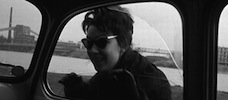
Une histoire d’eau
1958 -
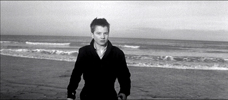
The 400 Blows
1959 -
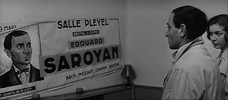
Shoot the Piano Player
1960 -
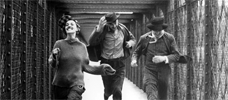
Jules and Jim
1962 -
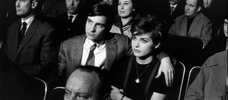
Antoine and Colette
1962 -
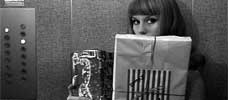
The Soft Skin
1964 -
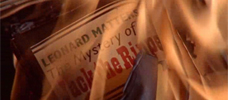
Fahrenheit 451
1966 -
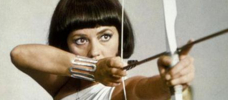
The Bride Wore Black
1968 -
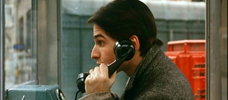
Stolen Kisses
1968 -
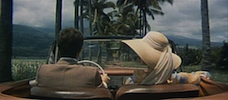
Mississippi Mermaid
1969 -
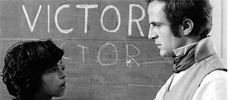
The Wild Child
1970 -
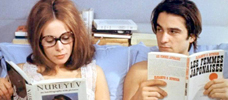
Bed and Board
1970 -
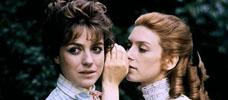
Two English Girls
1971 -
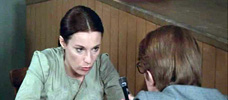
Such A Gorgeous Kid Like Me
1972 -
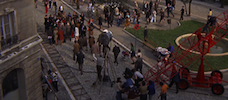
Day for Night
1973 -
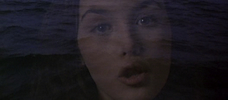
The Story of Adele H.
1975 -
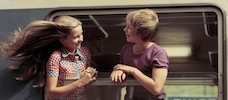
Small Change
1976 -
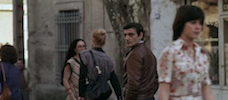
The Man Who Loved Women
1977 -
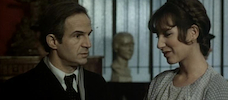
The Green Room
1978 -
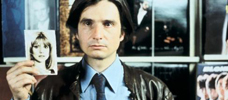
Love on the Run
1979 -
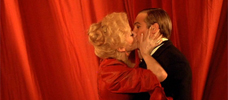
The Last Metro
1980 -
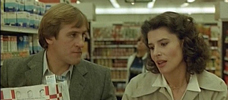
The Woman Next Door
1981 -
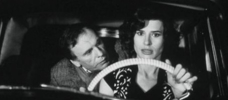
Confidentially Yours!
1983
We don’t do comments anymore, but you may contact us here or find us on Twitter or Facebook.



